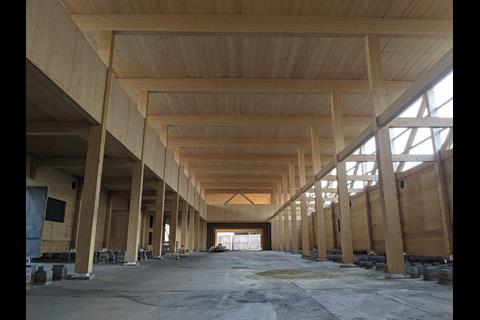Demountable structures could help meet the immediate needs of people in temporary housing, writes Dan Cole

For the majority of young people who don’t own their own home, the ever-increasing cost of buying or renting somewhere to live often feels like a simple and unavoidable fact of life. And yet we know that the UK wasn’t always like this. Those of us too young to remember (including myself), won’t necessarily know what it was like, but in the late 1970s the public housing stock was relatively plentiful and almost a third of UK households lived in council homes with rent charged at affordable rates.
However, alongside a love of spandex and perms, the 1980s also saw Margaret Thatcher massively expand the right-to-buy scheme, offering long-standing council tenants up to 50% discounts on the market value of their homes. On the face of it, giving tenants the opportunity to realise their dream of owning a home seemed positive, but the implementation was far from ideal. Although many homes were purchased under the scheme, a survey conducted by the Department of the Environment conducted in 1985-6 found that buyers in the first five years of the scheme had disproportionately higher incomes than the majority of social tenants.
Right-to-buy predated Thatcher, but previously councils had been allowed to replace housing that was sold with new stock. After 1980, councils were banned from building new homes (the ban was finally overturned in 2018). The loss of social housing stock and a lack of news homes to replace those lost has created a housing sector dominated by private ownership and an ongoing social housing deficit.

Due to insufficient supply of affordable social housing, 59,500 families across the UK are stuck in temporary accommodation, which is mostly private sector provision in places like B&Bs and converted houses in multiple occupation (HMOs). This accommodation is often run-down, poorly maintained and in some cases lacks appropriate bathroom or kitchen facilities.
Not only is this an inadequate response to housing those in desperate need, but it also costs local councils an eye-watering £1.6 billion a year (86% of which is given to private providers) . The housing and homelessness charity, Shelter, issued a briefing on temporary accommodation and the cost of homelessness in 2020, recommending that 90,000 social homes would need to be built a year in order to tackle this crisis.
Even if we did start addressing the root cause of the problem, the amount of social housing needed couldn’t be built overnight, especially when expenditure on private temporary accommodation is eating away at public sector budgets. So, what’s the interim step?
Temporary, demountable structures are ideal for this situation
To break the cycle, one solution might be to take money currently spent on temporary housing and invest it in council-owned units built on underused land they already own. Some social housing projects have already seen the potential of empty council plots, such as the development at Mandeville Street, which is part of Hackney’s Housing Supply Programme. The proposals would see over 400 homes built across 14 underused council-owned sites, including garages, car parks and depots, the majority of which will be for social rent and shared ownership.
Temporary, demountable structures are ideal for this situation and provide a real opportunity to quickly create sustainable, high quality and cost-effective homes for those on the waiting list for social housing. Sound too good to be true? We’ve previously explored this very idea for a food market, utilising a repeating timber frame of standardised elements that allows for demounting and reconfiguration at a different location at the end of its 5-year residency on the site (an underused council car park.)
Instead of a market, a similar structural solution could be deployed as a nationwide scheme where councils share a common set of temporary housing solutions. These well-designed and dignified homes could serve as a stop-gap while simultaneously replenishing social housing stocks.
The standardised “Meccano” like set of building components would be shipped to anywhere in the country and erected quickly on council sites. Traditional foundations aren’t necessarily required, as column loads can be placed directly on the surface through timber spreaders. This cuts out one of the most carbon-heavy areas of building and speeds up construction. Moreover, by omitting the need for excavation and buried structures, the site can easily be returned to its previous state after use, ready for future development.
As demand changes, so too can the buildings. Clip-on wood connectors and mechanical fixings in the finishes allow for easy reconfiguration or relocation of the building. As each council clears its housing backlog and no longer requires temporary accommodation, the entire building can be disassembled and moved to another area of the country where it is needed.
In an optimistic future where the housing market has stabilised, the structures can even be repurposed for other uses - community centres, libraries, or pop-up food markets. This circular, agile response to the housing crisis is surely more sustainable than the current method, which gives taxpayer money to B&B owners and keeps thousands in unsuitable accommodation.
Postscript
Dan Cole is a senior structural engineer at Webb Yates


















No comments yet